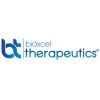
12-week Polysomnography Study of Ropinirole Controlled Release for Restless Legs Syndrome
Restless Legs Syndrome (RLS)Restless Legs SyndromeThe purpose of this study is to assess the efficacy and safety of ropinirole CR-RLS in the treatment of patients with Restless Legs Syndrome and associated sleep disturbance and period limb movements during sleep.

A Phase IV Trial With Pramipexole to Investigate the Effects on RLS Symptoms and Sleep Disturbance...
Restless Legs SyndromeThe primary objective of this study is to investigate the effects on RLS symptoms and sleep disturbance of pramipexole (Mirapexin) 0.125 mg/day to 0.75 mg/day per os for 12 weeks, compared to placebo, in the treatment of patients with idiopathic Restless Legs Syndrome

XP13512 vs. Placebo in Patients With Restless Legs Syndrome.
Restless Legs SyndromeThe primary objective of this trial is to assess the efficacy of XP13512 taken once daily compared to placebo for the treatment of patients suffering from Restless Legs Syndrome (RLS).

Long-Term Safety Of Ropinirole XR In Patients With Restless Legs Syndrome
Restless Legs SyndromeThe primary objective of this study is to assess the safety and tolerability of ropinirole XR in the long-term treatment (up to 52 weeks)of adults with RLS.

Phase IV Trial With Pramipexole to Evaluate Safety and Efficacy in Patients With RLS Associated...
Restless Legs SyndromeDepressionThe primary objective of this study is to determine the efficacy of pramipexole 0.125 mg to 0.75 mg daily versus placebo on RLS symptoms and on associated mood disturbances and depressive symptoms, after 12 weeks of treatment

Assess Efficacy and Safety of the Dopamine Agonist Pramipexole Versus Levodopa / Benserazide (Madopar®...
Restless Legs SyndromeThe primary objective of this study is to determine that pramipexole (Sifrol) 0.25 mg to 0.75 mg daily is not inferior to levodopa 100 mg to 300 mg (in combination with benserazide 25mg to 75mg = Madopar DR) daily in the treatment of patients with idiopathic restless legs syndrome fulfilling the International Diagnostic Criteria. The efficacy parameters include an objective measure of the leg movements during the time spent in bed, and a quantitative clinical assessment of the severity of RLS, in the form of the RLS-score. In addition, the efficacy evaluations aim at comparing the impact of pramipexole and levodopa on outcome measures such as quality of life and sleep.

Sub-Lingual Dexmedetomidine in Agitation Associated With Schizophrenia
AgitationSchizophreniaThis is a two-stage adaptive Phase Ib trial design, that will identify two doses (lowest dose with clinical benefit and highest safe dose) in a first stage and better evaluate safety, tolerability and variability of effect in the second stage.

Brexpiprazole for the Treatment of Patients With Agitation Associated With Dementia of the Alzheimer's...
Agitation Associated With Dementia of the Alzheimer's TypeTo evaluate the superiority of brexpiprazole 1 mg or 2 mg over placebo after a 10-week treatment regimen for agitation associated with dementia of the Alzheimer's type in patients who require medication, and to investigate the safety of brexpiprazole and identify the optimum dose.

Detection of Risk Behaviors: Pilot Observational Study With Bedridden and Agitated Patients.
Risk BehaviorAgitation2 moreThere is a risk of falls and injuries in bedridden hospitalized patients, increased in agitated or confused patients. In neurosurgery departments, brain damaged patients can present a loss of consciousness of risky behaviors and be in a state of agitation which frequently leads to their endangerment. The repercussions of this endangerment are multiple. For the patients, there may be a feeling of insecurity, with physical or chemical restraint solutions which deprive them of their freedom without a total guarantee of safety. For the caregivers, there is an emotional distress in front of this endangerment, and a professional guilt. Finally, there are economic repercussions due to the costs of complementary examinations and the lengthening of hospitalization. The objective of the present study is to determine the nature and frequency of occurrence of risk behaviours, through the observation of bedridden and agitated hospitalized patients. These risk behaviours are defined as potentially dangerous and are warning signs for the caregiver. A better understanding of these behaviours could help to better anticipate falls and injuries and to implement preventive measures more quickly.

Noninvasive Peripheral Nerve Stimulation for Restless Legs Syndrome During Opioid Medication Reduction...
Restless Legs SyndromeProspective open-label single-arm feasibility study assessing the tolerability of opioid medication reduction in conjunction with noninvasive peripheral nerve stimulation (NPNS) for patients taking prescription opioids to treat moderate-severe primary RLS.
